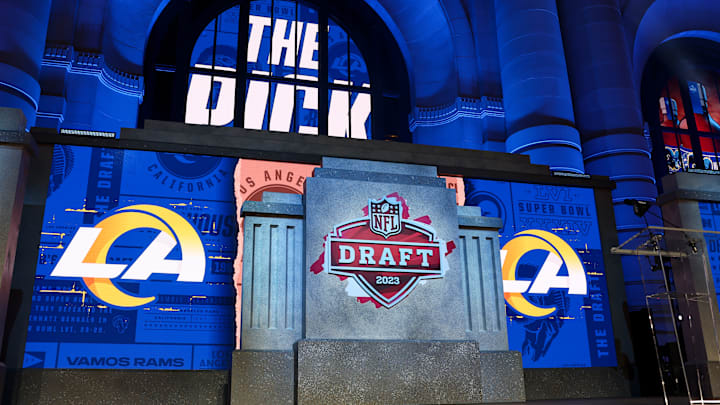
Which positions are more likely to hit on Day 1?
Not all positions in the NFL are created equally. No, I'm not trying to sound philosophically elite. I'm simply highlighting the fact that due to the way NFL teams try to establish themselves on the football field, and distribute limited salary dollars among various positional groups, teams set different priorities.
But even positions, due to the number of positions played in the NFL simultaneously, have a natural priority. Quarterbacks are deployed by NFL teams one at a time. But the fact that quarterbacks handle the football on each offensive snap and are vital to the performance of the overall offense make them one of the most valued and prioritized positions on an NFL roster.
But even NFL positions can change in value. Running backs were viewed as a vital position not so long ago. But with rules changes, changes of offensive philosophy, and a general belief that anyone can run the ball effectively in the NFL, NFL front offices no longer view running backs as good investments now. But the simple test of Parkinson circumvents all of this by simply applying one standard to all players: Were they extended by their original team?
Parkinson's hit rates from 2013-2017
So what did Parkinson discover about the hit rates of five NFL Drafts? Well, the data was not uniform, and the range of frequency suggests that NFL teams place far more value on certain positions than others. It's also fair to assess the fact that NFL teams are naturally biased to select offensive tackles and wide receivers, as those positions require multiple players to perform on the NFL field simultaneously.
That is not the case for a quarterback, which almost always appears only once per team on the football field at a time. So this tells us that wide receivers, offensive tackles and offensive guards should outnumber quarterback selections by a rough ratio of two to one.
And here is what Parkinson's data revealed:
Position | Hit | Total | Hit Rate |
|---|---|---|---|
Center | 2 | 3 | .667 |
Running back | 3 | 5 | .600 |
Offensive tackle | 10 | 17 | .588 |
Offensive guard | 5 | 10 | .588 |
Edge rusher | 10 | 23 | .435 |
Quarterback | 5 | 12 | .417 |
Tight end | 2 | 5 | .400 |
Cornerback | 9 | 23 | .391 |
Wide receiver | 8 | 21 | .381 |
Defensive lineman | 6 | 17 | .353 |
Linebacker | 2 | 10 | .200 |
Safety | 2 | 13 | .154 |
The hit rates from the above table give us a rough sense of which positions are selected in Round 1 of the NFL Draft. But there is more information that needs to be considered.
Quarterbacks tend to be selected early in Round 1, oftentimes being named as the first or at least among the top five players selected in the draft. For that lofty selection, the player must perform at a very elite level indeed. Do you consider Arizona Cardinals quarterback Kyler Murray to be a success or an utter failure? What of Chicago Bears quarterback Justin Fields? What of San Francisco 49ers quarterback Trey Lance? The plot, it seems, thickens.
